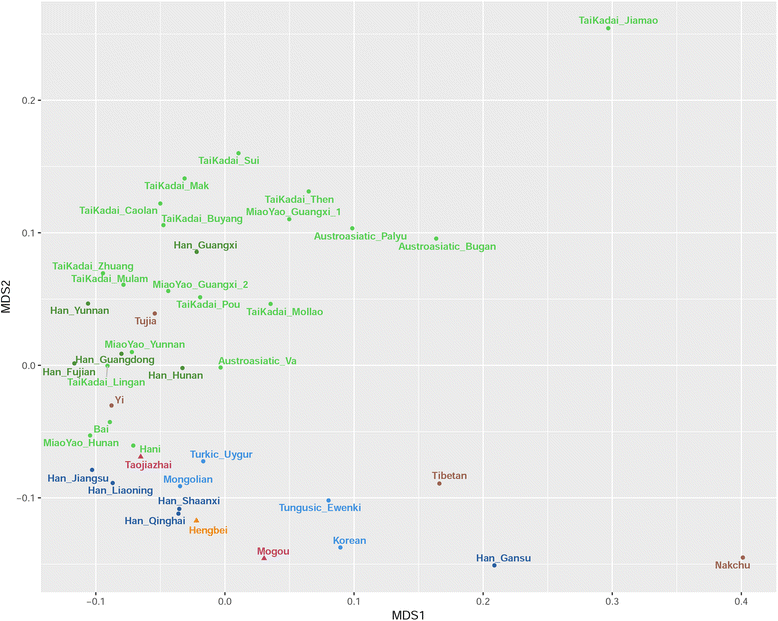Bernard Sécher reports on a recent article, Ancient DNA reveals genetic connections between early Di-Qiang and Han Chinese, by Li et al., BMC Evolutionary Biology (2017).
Abstract:
Background
Ancient Di-Qiang people once resided in the Ganqing region of China, adjacent to the Central Plain area from where Han Chinese originated. While gene flow between the Di-Qiang and Han Chinese has been proposed, there is no evidence to support this view. Here we analyzed the human remains from an early Di-Qiang site (Mogou site dated ~4000 years old) and compared them to other ancient DNA across China, including an early Han-related site (Hengbei site dated ~3000 years old) to establish the underlying genetic relationship between the Di-Qiang and ancestors of Han Chinese.Results
We found Mogou mtDNA haplogroups were highly diverse, comprising 14 haplogroups: A, B, C, D (D*, D4, D5), F, G, M7, M8, M10, M13, M25, N*, N9a, and Z. In contrast, Mogou males were all Y-DNA haplogroup O3a2/P201; specifically one male was further assigned to O3a2c1a/M117 using targeted unique regions on the non-recombining region of the Y-chromosome. We compared Mogou to 7 other ancient and 38 modern Chinese groups, in a total of 1793 individuals, and found that Mogou shared close genetic distances with Taojiazhai (a more recent Di-Qiang population), Hengbei, and Northern Han. We modeled their interactions using Approximate Bayesian Computation, and support was given to a potential admixture of ~13-18% between the Mogou and Northern Han around 3300–3800 years ago.Conclusions
Mogou harbors the earliest genetically identifiable Di-Qiang, ancestral to the Taojiazhai, and up to ~33% paternal and ~70% of its maternal haplogroups could be found in present-day Northern Han Chinese.

Interesting times now for the investigation of potential migrations associated with the expansion of Sino-Tibetan and Altaic languages…
Related:
- Two more studies on the genetic history of East Asia: Han Chinese and Thailand
- Expansion of peoples associated with spread of haplogroups: Mongols and C3*-F3918, Arabs and E-M183 (M81)
- How to do modern phylogeography: Relationships between clans and genetic kin explain cultural similarities over vast distances
- New Ukraine Eneolithic sample from late Sredni Stog, near homeland of the Corded Ware culture